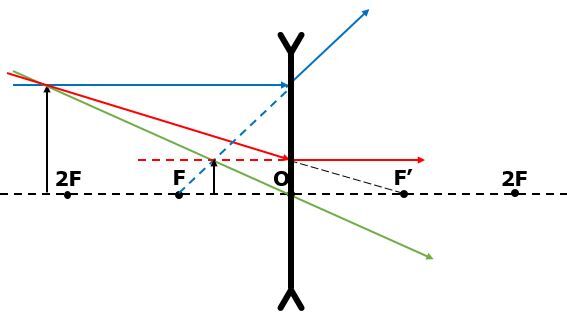Content code
p1038
Slug (identifier)
images-formed-by-diverging-lenses
Parent content
Grades
Secondary V
Topic
Physics
Content
Title (level 2)
Table Displaying the Characteristics of the Images Formed in Concave Lenses (or Diverging) Lenses
Title slug (identifier)
table-displaying-the-characteristics-of-the-images-formed
Contenu
Corps
|
|
Characteristics of the Image |
|||
|
Object position |
Nature |
Direction |
Size |
Position |
|
Regardless of the position of the object |
Virtual |
Upright |
Smaller |
Closer to the lens than the object |
To represent the images in concave (or diverging) lenses, it is essential to draw at least two of the three principal rays coming from the tip of the object. Then, the point where the refracted rays intersect with the principal axis must be connected to form the image.
Title (level 2)
The Object is Located in Front of the Lens
Title slug (identifier)
the-object-is-located-in-front-of-the-lens
Contenu
Image

Corps
Regardless of where the object is in front of the concave lens, the image characteristics will always be the same. Thus, the image will always be virtual, upright, smaller than the object, and located closer to the lens than to the object.